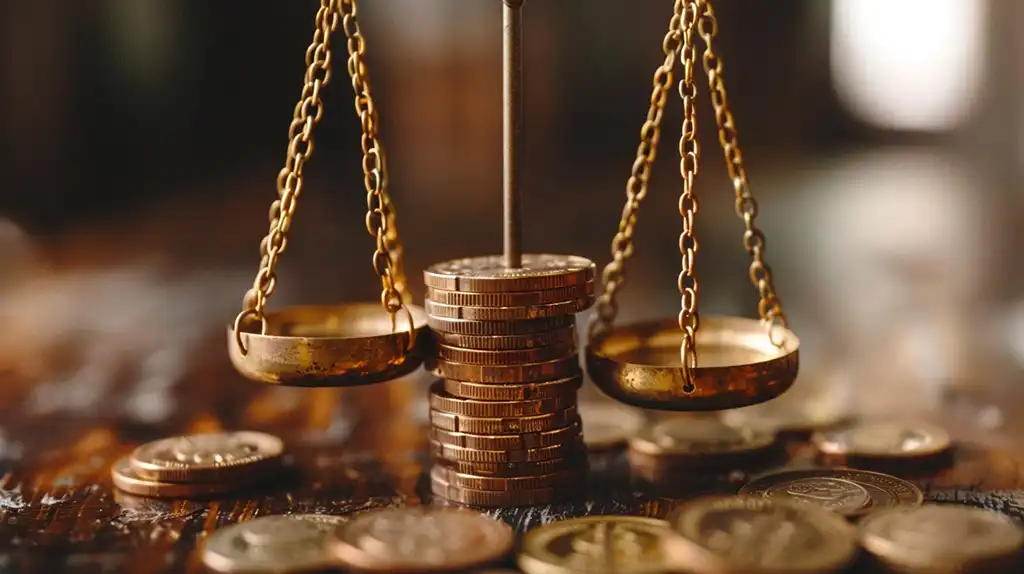01 October 2024
When it comes to personal finance, the term liabilities often brings a sense of unease. You might associate it with debt, obligations, or things you owe—and you wouldn’t be wrong. Liabilities are an integral part of your financial life, and understanding them is key to managing your money effectively. Whether you're running a business or simply managing your personal budget, knowing how to handle liabilities can significantly impact your financial health.In this article, we’ll break down what liabilities are, how they work, the different types, and most importantly, how to manage them to keep your finances in good shape.
1. What Are Liabilities?

In simple terms, liabilities are debts or obligations that you owe to others. They represent money that you are required to pay back, whether it’s to a bank, a lender, or even a service provider. It’s like borrowing your friend’s car—you’ll eventually need to return it, right? The same goes for liabilities: if you borrow money or have unpaid bills, you’ll need to settle those debts at some point.
In a broader sense, liabilities can include loans, mortgages, credit card balances, unpaid bills, or even future obligations like taxes or employee salaries (if you run a business). On a company’s balance sheet, liabilities are recorded alongside assets (things you own) and equity (your stake in those assets). Together, they form the foundation of your financial picture.
But don’t think of liabilities as all bad. While it's important to manage them carefully, liabilities can also be useful financial tools when used wisely. For instance, taking on a mortgage to buy a house or borrowing for business expansion can be strategic moves that build wealth in the long term.
2. Types of Liabilities
Not all liabilities are created equal. Some are short-term, requiring quick payment, while others can stretch over many years. Understanding the difference between current liabilities and long-term liabilities can help you plan your finances more effectively.
a. Current Liabilities
Current liabilities, also known as short-term liabilities, are obligations that are due within one year. These typically include things like:
- Credit card balances
- Utility bills
- Short-term loans
- Taxes payable
- Accounts payable (for businesses, this refers to money owed to suppliers)
These are the kinds of liabilities that pop up regularly in your day-to-day financial life. They require quick repayment, and managing them well can prevent you from falling into a cycle of high-interest debt or late payment penalties.
b. Long-Term Liabilities
Long-term liabilities are debts or obligations that extend beyond a one-year timeframe. These include:
- Mortgages
- Student loans
- Car loans
- Business loans
- Bonds payable (for businesses or governments)
These obligations are usually larger and take more time to pay off, but they often come with structured repayment plans. Managing long-term liabilities is all about ensuring that you can meet your payment obligations while balancing other financial goals.
3. Good Liabilities vs. Bad Liabilities
Not all debt is bad. In fact, some liabilities can work in your favor and help you achieve financial success. But like most things, it’s all about how you use them.
a. Good Liabilities
Good liabilities are debts that can lead to financial growth or asset appreciation over time. These typically include things like:
- Mortgages: Owning a home usually means building equity over time, making mortgages a good liability in most cases.
- Student loans: If education increases your earning potential, student loans can be considered a worthwhile investment.
- Business loans: Borrowing to expand a business can lead to higher revenue and profits, making these loans a strategic move.
Think of good liabilities as a lever—they can help you lift more than you could on your own, as long as you use them correctly.
b. Bad Liabilities
On the flip side, bad liabilities are debts that don’t contribute to your long-term financial well-being and can often lead to financial trouble if not managed carefully. These include:
- High-interest credit card debt: Carrying a balance on a credit card with a high interest rate can quickly snowball into unmanageable debt.
- Personal loans for non-essential purchases: Borrowing money for things like vacations or shopping sprees that don’t offer any financial return can lead to unnecessary debt.
- Payday loans: These short-term loans come with extremely high interest rates and fees, often trapping people in a cycle of debt.
Bad liabilities are like carrying extra baggage. They weigh you down and don’t contribute to your financial growth. The goal is to minimize or avoid them altogether.
4. How to Manage Liabilities Effectively
Managing your liabilities is all about balance. You want to use good debt strategically while avoiding the pitfalls of bad debt. Here’s a step-by-step guide to managing your liabilities like a pro.
a. Create a Budget and Stick to It
Budgeting is the foundation of good financial management. By creating a budget, you can allocate funds toward paying off liabilities while ensuring you have enough left over for savings and other expenses.
Start by listing all your current liabilities, including credit card balances, loans, and any other debts. Then, determine how much you can comfortably pay toward each liability each month. Prioritize high-interest debt, like credit cards, to reduce the amount of interest you pay over time.
b. Build an Emergency Fund
An emergency fund acts as a financial safety net, ensuring that you can cover unexpected expenses without resorting to high-interest debt. Aim to save at least three to six months' worth of living expenses in an easily accessible account. With an emergency fund in place, you can avoid taking on additional liabilities when life throws you a curveball.
c. Pay Off High-Interest Debt First
When managing liabilities, one of the smartest strategies is to tackle high-interest debt first. This is because high-interest debt (like credit card balances) costs you more in the long run due to compounding interest. The faster you pay off these debts, the less you’ll pay in total.
One popular approach is the debt avalanche method, where you prioritize paying off the highest-interest debts while making minimum payments on lower-interest liabilities. This approach minimizes the amount of interest paid over time.
d. Consolidate Debt When It Makes Sense
Debt consolidation can be a helpful tool for managing multiple liabilities, especially if you have several high-interest debts. Consolidation involves rolling several debts into one, ideally with a lower interest rate. This can simplify your payments and reduce the overall interest you owe.
For example, you could transfer credit card balances to a card with a lower interest rate or take out a personal loan to pay off multiple high-interest debts.
e. Keep Your Debt-to-Income Ratio in Check
Your debt-to-income (DTI) ratio is a measure of how much of your income goes toward paying off liabilities. It’s an important factor lenders use when deciding whether to approve you for new credit, like a mortgage or car loan. Ideally, your DTI ratio should be below 36%. Anything higher might make it difficult to qualify for loans or result in higher interest rates.
If your DTI is too high, focus on paying down existing debt before taking on new liabilities.
f. Use Credit Responsibly
Credit cards can be useful tools for managing cash flow and earning rewards, but they can also lead to debt if not used responsibly. The key is to only charge what you can afford to pay off in full each month. This way, you avoid paying interest and keep your credit utilization ratio low, which can boost your credit score.
5. The Importance of Regularly Reviewing Your Liabilities
Liabilities aren’t static—they change over time as you pay off debts, take on new loans, or experience shifts in income. That’s why it’s essential to regularly review your liabilities to ensure you’re on track with your financial goals.
Set a schedule to review your liabilities every few months. During this review, ask yourself:
- Have I made progress in paying down debt?
- Are there any new liabilities I need to account for?
- Can I adjust my budget to accelerate debt repayment?
By staying proactive, you can prevent liabilities from spiraling out of control and keep your financial picture clear.
6. When Should You Consider Taking on New Liabilities?
While taking on new liabilities can be risky, there are times when it makes sense. For example, borrowing money to buy a home, pursue higher education, or expand a business can be a strategic move that pays off in the long term.
Before taking on any new liability, ask yourself:
- Will this liability help me achieve a specific financial goal?
- Can I comfortably afford the payments without straining my budget?
- How will this liability impact my overall financial health?
If the answer to these questions is positive, the liability could be a worthwhile investment. Just be sure to avoid taking on new debt impulsively or for non-essential purchases.
Conclusion
Understanding liabilities is crucial for maintaining financial health, whether you're dealing with personal debt or managing the finances of a business. Not all liabilities are bad, and when used strategically, they can help you achieve your financial goals. The key is to manage them effectively, prioritize paying off high-interest debt, and make smart decisions about when to take on new liabilities.
By keeping a close eye on your financial obligations and being proactive about repayment, you can turn liabilities from financial burdens into tools for growth. With a solid plan in place, liabilities won’t just be something you owe—they’ll be a stepping stone to achieving your broader financial aspirations.


